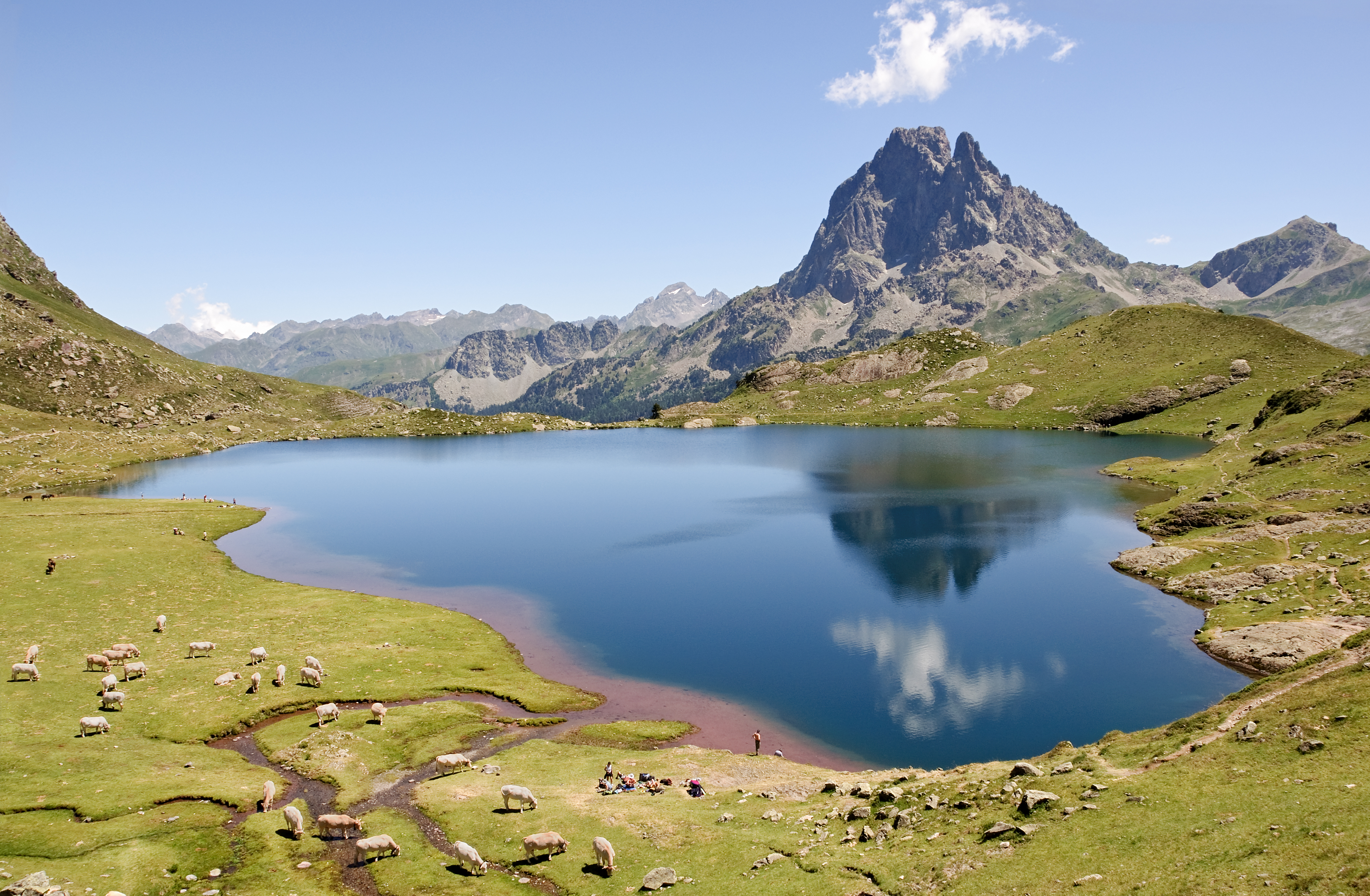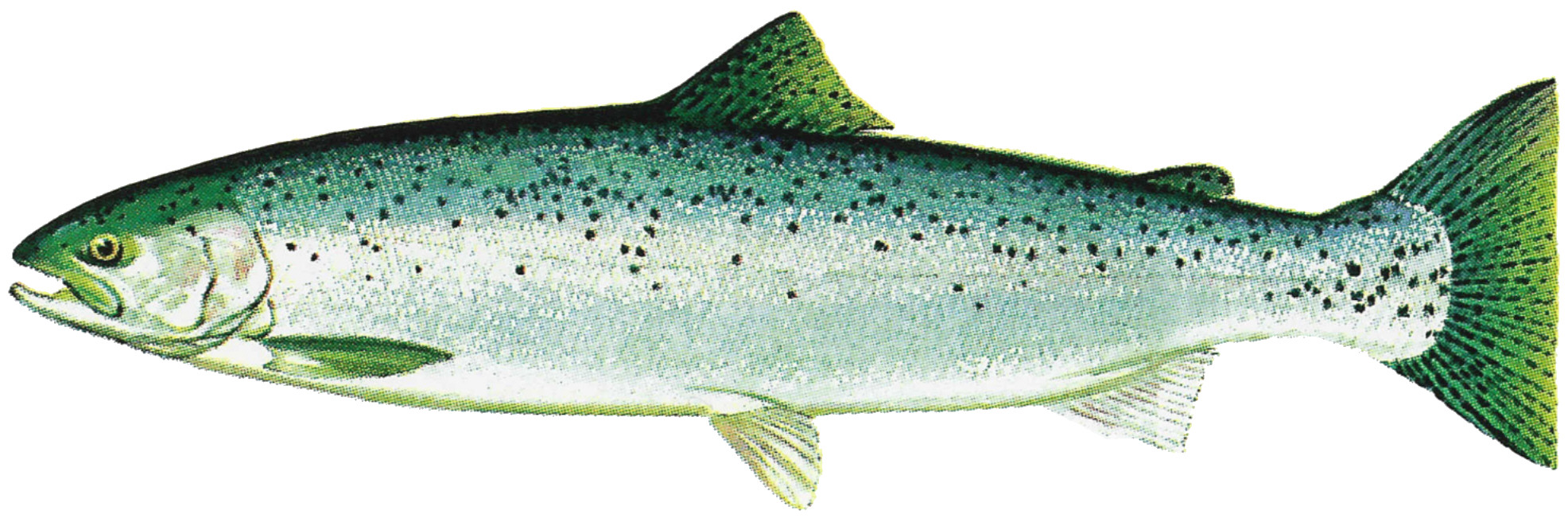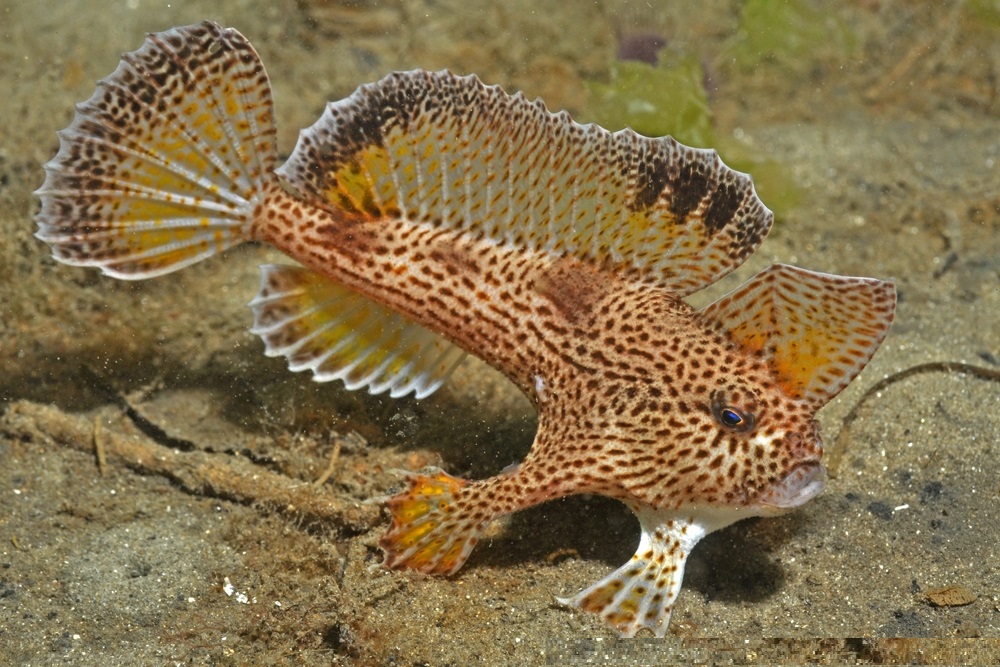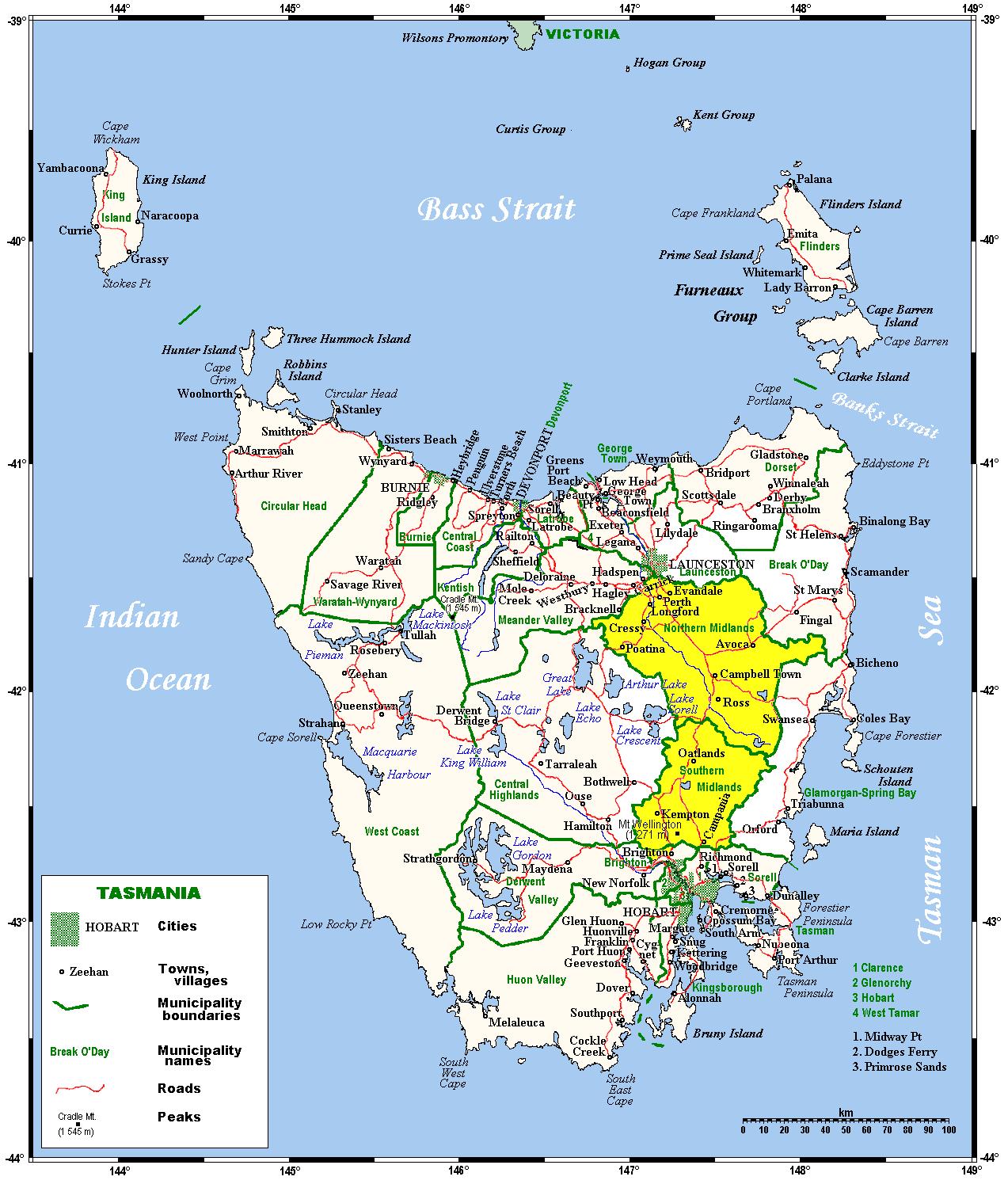|
Lake Crescent (Tasmania)
Lake Crescent is a man-made reservoir located in the eastern side of the Midlands (Tasmania), Midlands region of Tasmania, Australia, approximately north of Hobart. Lake Crescent is the main home for the golden galaxias ''Galaxias auratus''. Carp, ''Cyprinus carpio'', were discovered in the lake in 1995, but were eradicated using innovative techniques. Ramsar is an internationally significant wetland game reserve. The Short Fin Freshwater Eel (''Anguilla australis'') used to migrate to Lake Crescent from the ocean. However its movement has been impounded by dams on the River Derwent (Tasmania), Derwent River, and mesh screens on the Clyde River (Tasmania), Clyde River to limit the movement of carp. The Inland Fishers Service has been stocking elvers into the lake to sustain a commercial eel fishery. Other fish that are stocked and fished from the lake are brown trout and rainbow trout. There is one boatramp into the lake accessed from Lake Crescent Road. Other roads in the vic ... [...More Info...] [...Related Items...] OR: [Wikipedia] [Google] [Baidu] |
Interlaken Lakeside Reserve
The Interlaken Lakeside Reserve is a wetland reserve at subalpine Interlaken, lying at the north-western end of Lake Crescent on the Interlaken isthmus between the reservoirs of Lakes Sorell and Crescent, about 20 km west of Tunbridge, Tasmania, Tunbridge, in the Central Highlands (Tasmania), Central Highlands of Tasmania, Australia. In 1982 it was designated a wetland of international importance under the Ramsar Convention. Description The 520 ha Ramsar site is about one third open water and one third dry land, with the remaining third consisting mainly of ''Triglochin procera'' – ''Baumea arthrophylla'' marsh, marshland. Wetland conditions depend on management of water levels in Lake Crescent, which receives water from Lake Sorell and supplies it to the Clyde River (Tasmania), Clyde River for irrigation in the Clyde Valley. The site is one of three known localities in Tasmania for the Cyperaceae, sedges ''Scirpus mantivagus'' and ''Isolepis montivaga'', and for the ... [...More Info...] [...Related Items...] OR: [Wikipedia] [Google] [Baidu] |
Cyprinus Carpio
The Eurasian carp or European carp (''Cyprinus carpio''), widely known as the common carp, is a widespread freshwater fish of eutrophic waters in lakes and large rivers in Europe and Asia.Fishbase''Cyprinus carpio'' Linnaeus, 1758/ref>Arkive The native wild populations are considered vulnerable to extinction by the International Union for Conservation of Nature (IUCN), but the species has also been domesticated and introduced (see aquaculture) into environments worldwide, and is often considered a destructive invasive species, being included in the list of the world's 100 worst invasive species. It gives its name to the carp family, Cyprinidae. Taxonomy The two subspecies are: * ''Cyprinus carpio carpio'', native to much of Europe (notably the Danube and Volga rivers)Jian Feng Zhou, Qing Jiang Wu, Yu Zhen Ye & Jin Gou Tong (2003). Genetic divergence between ''Cyprinus carpio carpio'' and ''Cyprinus carpio haematopterus'' as assessed by mitochondrial DNA analysis, with emphasis ... [...More Info...] [...Related Items...] OR: [Wikipedia] [Google] [Baidu] |
Lakes Of Tasmania
A lake is an area filled with water, localized in a basin, surrounded by land, and distinct from any river or other outlet that serves to feed or drain the lake. Lakes lie on land and are not part of the ocean, although, like the much larger oceans, they do form part of the Earth's water cycle. Lakes are distinct from lagoons, which are generally coastal parts of the ocean. Lakes are typically larger and deeper than ponds, which also lie on land, though there are no official or scientific definitions. Lakes can be contrasted with rivers or streams, which usually flow in a channel on land. Most lakes are fed and drained by rivers and streams. Natural lakes are generally found in mountainous areas, rift zones, and areas with ongoing glaciation. Other lakes are found in endorheic basins or along the courses of mature rivers, where a river channel has widened into a basin. Some parts of the world have many lakes formed by the chaotic drainage patterns left over from the last ic ... [...More Info...] [...Related Items...] OR: [Wikipedia] [Google] [Baidu] |
Lake Sorell (Tasmania)
A lake is an area filled with water, localized in a basin, surrounded by land, and distinct from any river or other outlet that serves to feed or drain the lake. Lakes lie on land and are not part of the ocean, although, like the much larger oceans, they do form part of the Earth's water cycle. Lakes are distinct from lagoons, which are generally coastal parts of the ocean. Lakes are typically larger and deeper than ponds, which also lie on land, though there are no official or scientific definitions. Lakes can be contrasted with rivers or streams, which usually flow in a channel on land. Most lakes are fed and drained by rivers and streams. Natural lakes are generally found in mountainous areas, rift zones, and areas with ongoing glaciation. Other lakes are found in endorheic basins or along the courses of mature rivers, where a river channel has widened into a basin. Some parts of the world have many lakes formed by the chaotic drainage patterns left over from the last ice ... [...More Info...] [...Related Items...] OR: [Wikipedia] [Google] [Baidu] |
Dago Point
Dago may refer to: Places * Dagö/Dagø, the Swedish/Danish name of Hiiumaa, Estonia * Dago, Ghana, a village * Dago, Bandung, an area in Bandung, West Java, Indonesia * Dago Creek, Alaska * The Hill, St. Louis, in St. Louis, Missouri, was referred to as "Dago Hill" in the early 20th century * A slang term used to refer to the city of San Diego or San Diego County in California People * Ananias Leki Dago (born 1970), Ivorian photographer * Charles Dago (born 1975), Ivorian footballer * Nadrey Dago (born 1997), Ivorian footballer * Dago García, Colombian film producer Darío Armando García Granados (born 1962) * Frank Cirofici (1887–1914), also known as Dago Frank, Italian-American gangster * Frank Salvatore, also known as Mike the Dago, early 20th century Italian-American bootblack and politician Arts and entertainment * Dagö, an Estonian folk rock band ** ''Dagö'' (album), the band's 2000 debut album * Dago (comics), a Paraguayan comic book character Other uses * D ... [...More Info...] [...Related Items...] OR: [Wikipedia] [Google] [Baidu] |
Rainbow Trout
The rainbow trout (''Oncorhynchus mykiss'') is a species of trout native to cold-water tributaries of the Pacific Ocean in Asia and North America. The steelhead (sometimes called "steelhead trout") is an anadromous (sea-run) form of the coastal rainbow trout or Columbia River redband trout that usually returns to freshwater to spawn after living two to three years in the ocean. Freshwater forms that have been introduced into the Great Lakes and migrate into tributaries to spawn are also called steelhead. Adult freshwater stream rainbow trout average between , while lake-dwelling and anadromous forms may reach . Coloration varies widely based on subspecies, forms, and habitat. Adult fish are distinguished by a broad reddish stripe along the lateral line, from gills to the tail, which is most vivid in breeding males. Wild-caught and hatchery-reared forms of the species have been transplanted and introduced for food or sport in at least 45 countries and every continent e ... [...More Info...] [...Related Items...] OR: [Wikipedia] [Google] [Baidu] |
Brown Trout
The brown trout (''Salmo trutta'') is a European species of salmonid fish that has been widely introduced into suitable environments globally. It includes purely freshwater populations, referred to as the riverine ecotype, ''Salmo trutta'' morpha ''fario'', a lacustrine ecotype, ''S. trutta'' morpha ''lacustris'', also called the lake trout, and anadromous forms known as the sea trout, ''S. trutta'' morpha ''trutta''. The latter migrates to the oceans for much of its life and returns to fresh water only to spawn. Sea trout in Ireland and Britain have many regional names: sewin in Wales, finnock in Scotland, peal in the West Country, mort in North West England, and white trout in Ireland. The lacustrine morph of brown trout is most usually potamodromous, migrating from lakes into rivers or streams to spawn, although evidence indicates some stocks spawn on wind-swept shorelines of lakes. ''S. trutta'' morpha ''fario'' forms stream-resident populations, typically in alpine st ... [...More Info...] [...Related Items...] OR: [Wikipedia] [Google] [Baidu] |
River Derwent (Tasmania)
The River Derwent is a river located in Tasmania, Australia. It is also known by the palawa kani name timtumili minanya. The river rises in the state's Central Highlands at Lake St Clair, and descends more than over a distance of more than , flowing through Hobart, the state's capital city, before emptying into Storm Bay and flowing into the Tasman Sea. The banks of the Derwent were once covered by forests and occupied by Aboriginal Tasmanians. European settlers farmed the area and during the 20th century many dams were built on its tributaries for the generation of hydro-electricity. Agriculture, forestry, hydropower Hydropower (from el, ὕδωρ, "water"), also known as water power, is the use of falling or fast-running water to produce electricity or to power machines. This is achieved by converting the gravitational potential or kinetic energy of ... generation and fish hatcheries dominate catchment land use. The Derwent is also an important source of wat ... [...More Info...] [...Related Items...] OR: [Wikipedia] [Google] [Baidu] |
Anguilla Australis
The short-finned eel (''Anguilla australis''), also known as the shortfin eel, is one of the 15 species of eel in the family Anguillidae. It is native to the lakes, dams and coastal rivers of south-eastern Australia, New Zealand, and much of the South Pacific, including New Caledonia, Norfolk Island, Lord Howe Island, Tahiti, and Fiji. Description The body of the adult short-finned eel is long and snakelike, roughly tubular and the head is small, with the jaws reaching back to below the eye or further. The dorsal (top) and anal (bottom) fins are of roughly equal length. The colour varies considerably from one individual to another; a deep olive-green is typical but it can be much lighter; golden or even (rarely) yellowish. There are no markings of note, but the underside is pale, often silvery, and the fins greenish. When full grown, they reach about 90 cm. The short-finned eel has a typical regeneration time of 15 to 30 years for females and it reaches a maximum ... [...More Info...] [...Related Items...] OR: [Wikipedia] [Google] [Baidu] |
Galaxias Auratus
The Golden galaxias (''Galaxias auratus'') is an endangered species of landlocked galaxiid fish belonging to the genus ''Galaxias''. It is endemic to Lakes Crescent, Sorell, and their associated waterways located in central Tasmania, Australia. Description The Golden galaxias are small scaleless salmoniform fish that typically grows from 140mm to a maximum of 240mm in length (tip of snout to tail). It has a thickset body with a long head, slender snout, and the characteristic cylindrical trunk shared by other fish in the family Galaxiidae. Its namesake comes from the distinctive golden-amber colouration and dark olive-green circular spots on its dorsal/upper surface; plus the dark ovoid markings on its sides. It has a silvery-grey colouration on its ventral/under surface postulated as a form of countershading camouflage. The fins are amber to light orange in colour with black margins. Phylogenetic relation to other Galaxias The family Galaxiidae of which ''Galaxias auratus'' ... [...More Info...] [...Related Items...] OR: [Wikipedia] [Google] [Baidu] |
Midlands (Tasmania)
The Midlands is a region of Tasmania between Launceston and Hobart. It also refers to the relatively flat, dry agricultural area, so named because it covers the region between the two cities. Its name is probably also influenced from the Midlands in the United Kingdom. It lends its name to the Southern Midlands Council, Northern Midlands Council, and the Midland Highway. The region is sometimes conflated or confused with the adjacent region of the Central Highlands—with the added term ''Tasmania's heartland''. Geography Most of the Midlands is a region of relatively low plains drained mostly by tributaries of the Tamar River in the north and Jordan River in the south. The natural vegetation was predominantly grassland, but all of it is either grazed by cattle and sheep or cleared for growing better pasture species. On the eastern side it rises into low, unglaciated dolerite hills and mountains, largely covered with dry sclerophyllous forests, but on the west lies th ... [...More Info...] [...Related Items...] OR: [Wikipedia] [Google] [Baidu] |
Hobart
Hobart ( ; Nuennonne/ Palawa kani: ''nipaluna'') is the capital and most populous city of the Australian island state of Tasmania. Home to almost half of all Tasmanians, it is the least-populated Australian state capital city, and second-smallest if territories are taken into account, before Darwin, Northern Territory. Hobart is located in Tasmania's south-east on the estuary of the River Derwent, making it the most southern of Australia's capital cities. Its skyline is dominated by the kunanyi/Mount Wellington, and its harbour forms the second-deepest natural port in the world, with much of the city's waterfront consisting of reclaimed land. The metropolitan area is often referred to as Greater Hobart, to differentiate it from the City of Hobart, one of the five local government areas that cover the city. It has a mild maritime climate. The city lies on country which was known by the local Mouheneener people as nipaluna, a name which includes surrounding features such a ... [...More Info...] [...Related Items...] OR: [Wikipedia] [Google] [Baidu] |


_2020.jpg)


.gif)

